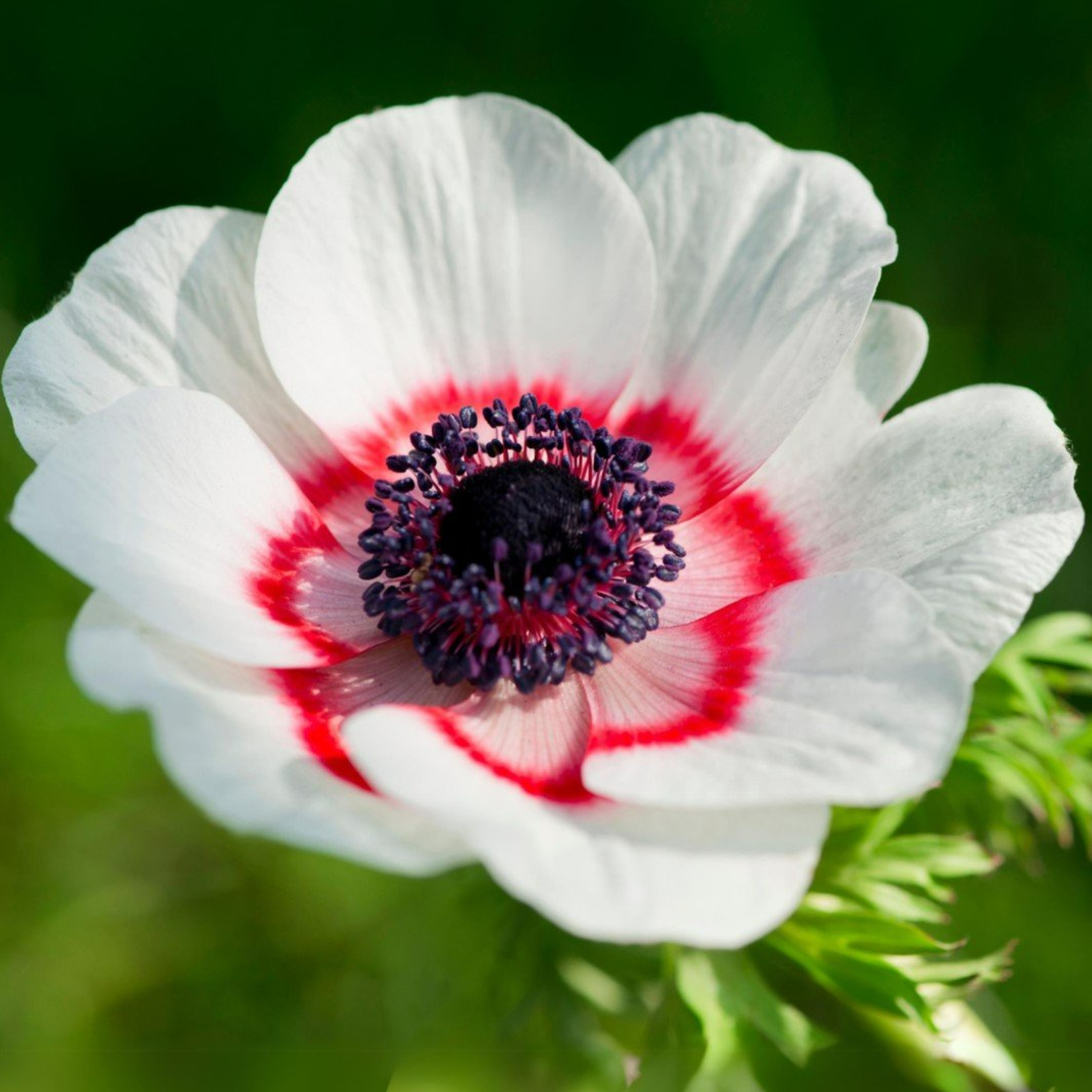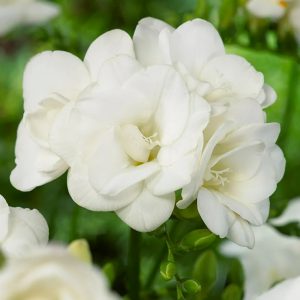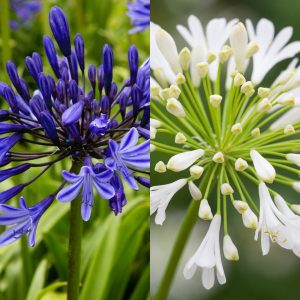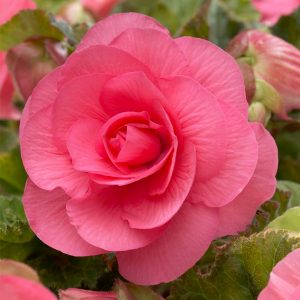Anemone Bicolor Da Caen
£5.49 – £14.99
0 reviews
Poppy-flowered Anemone
- Anemone bicolor is an easy to grow poppy like, flowering tuberous herbaceous perennial. This stunning rare full hardy plant blooms through March to May and is popular in UK gardens as it is pollinator friendly, loved by bees and butterflies. It produces large cup shaped flower heads of striking white petals with a raspberry red ring and a deep blue, black centre. Known as Poppy flowered anemone, these lovely deciduous flowers will add interest to your garden wherever planted, growing to a height of 30 cm and spread of 15 cm.
- Due to Anemone bicolor’s shorter stature it is perfect for the front or centre of a border or as a statement plant in pots or containers. When planted in containers and pots for maximum impact, plant the bulbs closer together to create a fuller display. Further to this they are ideal for growing in alpine and rockery gardens, as well as in cottage and wildlife gardening schemes. They can be used as cut flowers allowing you to enjoy them in your home and garden.
- If you are not ready to plant bulbs now, then store them in a cool, dry, frost free, well ventilated location. A garage, shed, loft or cupboard are ideal. Open the paper bag to allow air to circulate round but leave the bulbs in their bags until ready to plant. Just make sure mice or other rodents can’t get access to them. Keep an eye on your bulbs while in storage, if they are showing signs of going soft, it's best to get them planted before they deteriorate any further.
- These bulbs are on pre-order for dispatch Early February 2025.
-
Eventual Height
Up to 30cm
-
Season of Interest
March to May
-
Light Required
Full sun to partial shade
-
Watering
Moderate watering
-
Best Growing Conditions
Plant these bulbs 3-5 cm deep and between 5 and 10 cm apart during February to December in fertile, well draining soil in a sheltered area that gets full sun to partial shade. Before planting, soak them in water for 12-24 hours. After planting, water well and water about once a week during the growing season. Ideally you should choose a spot where they can be left undisturbed so they can naturalise and spread. Avoid excessively wet conditions when dormant.
















